Cultured Marble vs Quartz (Pros and Cons)
This comparison of cultured marble vs quartz shares what they are, pros and cons, differences in design, durability, cost, maintenance, and where to use these materials for interior design.
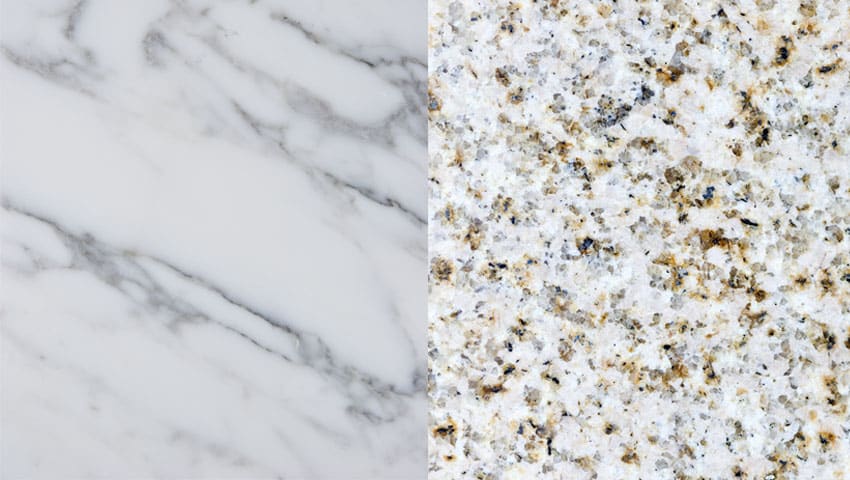
Although cultured marble and quartz appear similar, they are completely different stones. Their only major similarity is that both of these stones are synthetic.
In this article, we will compare cultured marble and quartz and explore their benefits and drawbacks to help you determine which material is best for your kitchen or bathroom.
What Is Cultured Marble?
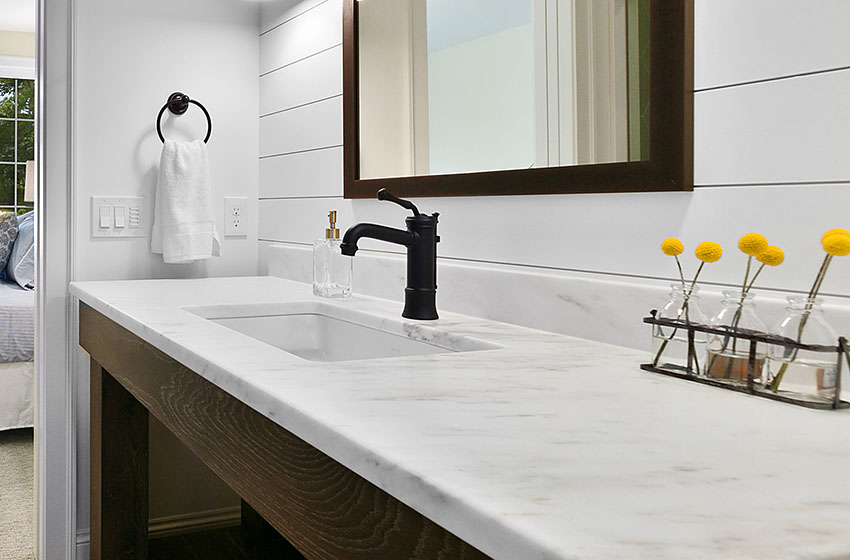
Moreover, cultured marble is composed of approximately 75% natural marble dust. Cultured marble surfaces are also created by combining marble dust with liquid polyester resin.
Kitchen counters, bathroom vanity surfaces, shower walls, backsplash, basins, and other surfaces are often made from cultured marble. Cultured marble showers and vanity tops have grown in popularity in recent years.
What Is Cultured Quartz?
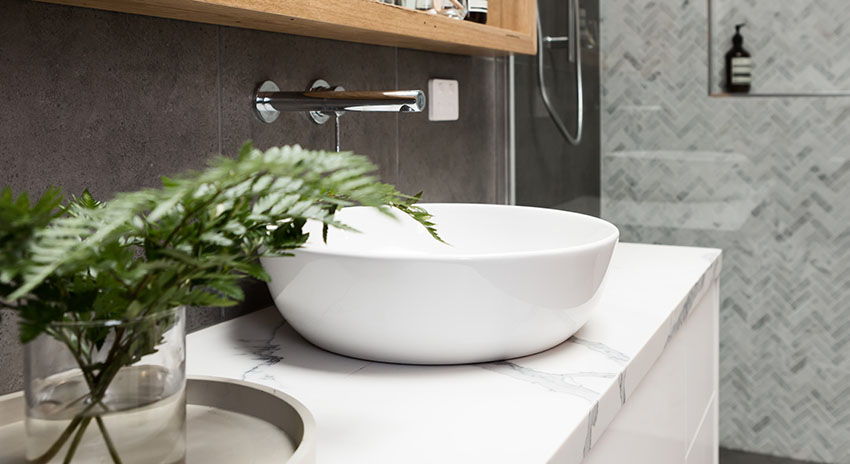
Furthermore, quartz is a relatively recent addition to the material industry. It is a manufactured material made up of 95% quartz stone and resin made primarily of polymer resins as well as pigments.
Quartz is the second most prevalent mineral on Earth and has a Mohs scale toughness of 7, implying that it can endure almost anything. Since it is a man-made material, it can have an almost infinite number of colors and patterns.
While quartz is a man made material you can find quartzite slabs that are made up of 100% natural stone materials. Read more about quartz vs quartzite here.
Cultured Marble vs Quartz Pros and Cons
Let us go over the pros and cons of these artificial stones:
Pros of Cultured Marble
Affordable Price – Cultured or artificial marble is significantly less expensive than genuine marble. If you buy a cultured marble countertop or sink with the same specifications, cultured marble will cost only a quarter of the price of authentic marble. Even so, the appearance is still incredibly alluring and difficult to identify to the untrained eye whether it is genuine or not.
Solid Surface with No Grout – Artificial marble has a firm surface, which is advantageous to materials such as tile. You do not have to be concerned about grout joints and deal with food production challenges that are common with porous surfaces.
Very Customizable – One of the most appealing aspects of artificial marble is its versatility. Since you will be engaging with a mixed material of particles and resin, you can use practically any color, design, or arrangement.
Moreover, you can recreate the look of classic marble or go for something more eye-catching. Plus, you can form it into virtually any shape you choose, making it ideal for a variety of uses in your kitchen or bathroom.
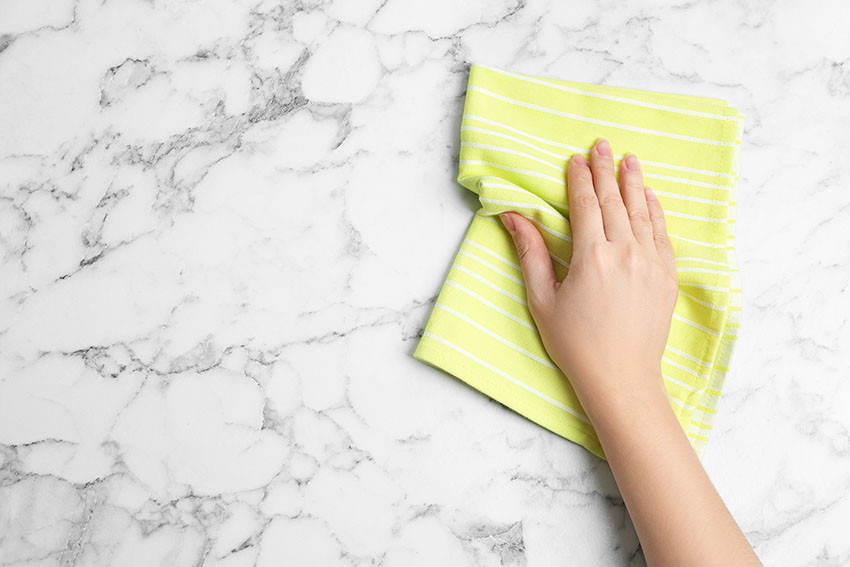
You just have to be cautious not to use an abrasive material or you are at risk of ruining the finish. To keep the material tidy, you can apply a small amount of dish soap in a microfiber cloth to wipe it.
Very Durable – Artificial or cultured marble is highly durable when compared to other materials. It is reasonably resistant to scratching and abrasive wear and can endure pressure.
Versatile – Cultured marble is also extremely versatile. It is suitable for counters, sinks, backsplashes, shower rooms, bathtubs, trimming, as well as a variety of other applications. It can be used for almost any purpose in your bathroom or kitchen.
Cons of Cultured Marble
Can be Prone to Scratches – Cultured marble is fairly durable in comparison to other materials, although it is not unbreakable. This material can be prone to scratches, which can be difficult to address as well.
An abrasive cleaning agent or similarly harmful substance might create semi-permanent marks on your countertop or flooring, which may require you to refinish it.
Can be Challenging to Maintain – You must ensure the maintenance of your artificial or cultured marble product if you expect it to last for a long time. You need to preserve it from excessive temperatures, prevent it from scratches, and clean it using the correct materials and techniques.
Artificial Marble Can be Inconsistent Aesthetically – Artificial marble is often made from a collection of tiny particles and is manufactured by a variety of manufacturers. Hence, the appearance may be erratic. There may be instances where the color is somewhat off or the texture seems to differ from what you expected.
The Gel Coating Cracks Over Time – The majority of artificial marble is covered with a long-lasting gel coating, which helps to keep the material in excellent condition. This gel, meanwhile, can break as it matures. It begins with very little, spreading cracks and can spread throughout the material.
Low-Quality Artificial Marble Can be Prone to Staining – Toothpaste, vinegar, and other acidic chemicals may discolor low-quality artificial marble. Plenty of these can be fixed, but only with extensive efforts.
Pros of Quartz
Extremely Durable and Scratch-Resistant – Quartz is a solid and durable material. Because most natural stone surfaces scratch easily, users replace them every 10 to 15 years. Quartz, on the other hand, is scratch-resistant, but not completely scratch proof, which means it will last much longer.
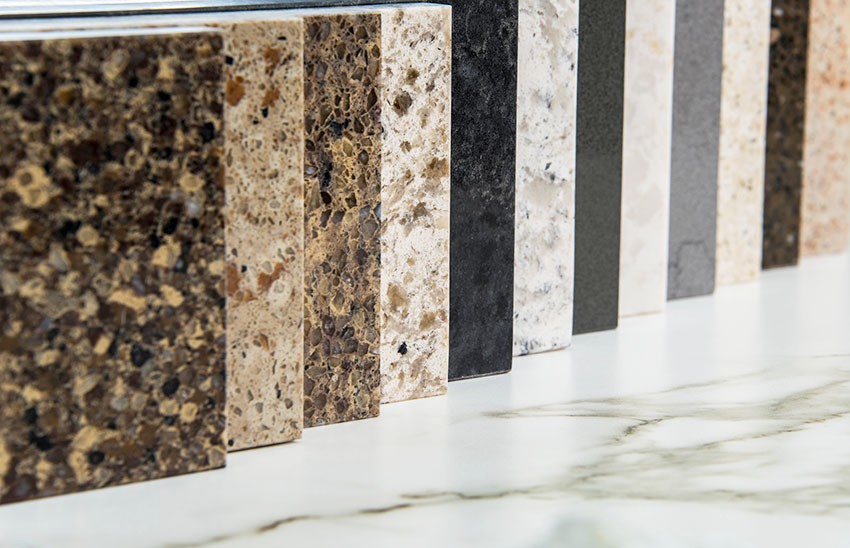
Moreover, quartz can be manufactured to look like genuine stone, making it hard to tell them apart from granite and marble. Quartz with repurposed metallic and glass speckles has a more modern appearance.
Furthermore, the slabs are obtainable in honed and polished treatments, thus you can be confident that you will find something that will match your needs.
Non-Porous – Because quartz is non-porous, liquids do not penetrate its surface. This also makes it impenetrable to germs and pathogens, contrary to stone and produces a sanitary working environment. This benefit makes quartz countertops a good choice for kitchens and bathrooms.
Very Easy to Maintain – Because quartz has no pores, it is easier to keep and maintain than most natural stone surfaces. It also includes a unique sealer that makes it resistant to most stains.
In most cases, using chemicals that are commonly available will not compromise the integrity and beauty of quartz. A gentle dish washing liquid and a moist towel may also suffice.
Can Fit Practically Any Decor – It is indeed easy to integrate quartz into your existing decor because the slabs you encounter in the store appear exactly like the product that will be placed in your home when it comes to its pattern, design, color, and style.
Cons of Quartz
Heat Can Damage Quartz Surfaces – Even though quartz is capable of withstanding heat, the polymers and resins employed in its manufacture are not. Subjecting quartz surfaces to hot equipment can cause the resins to dissolve, leading to irreversible discoloration. Cloudiness as well as spots are two warning signals to keep an eye out for.
Can be Challenging to Install – Because of the weight of the quartz material, builders must ensure that the foundation is durable and sturdy enough to support it. They must also meticulously lay each slab to eliminate obvious joints.
Expensive – Because of their advantages, quartz is often more pricey than marble or granite. For example, contingent on the intricacy of the project as well as the condition of the quartz countertop, you should budget between $100 and $200 per square foot. Their benefits, though, make them investment-worthy.
Cultured Marble vs Quartz Durability
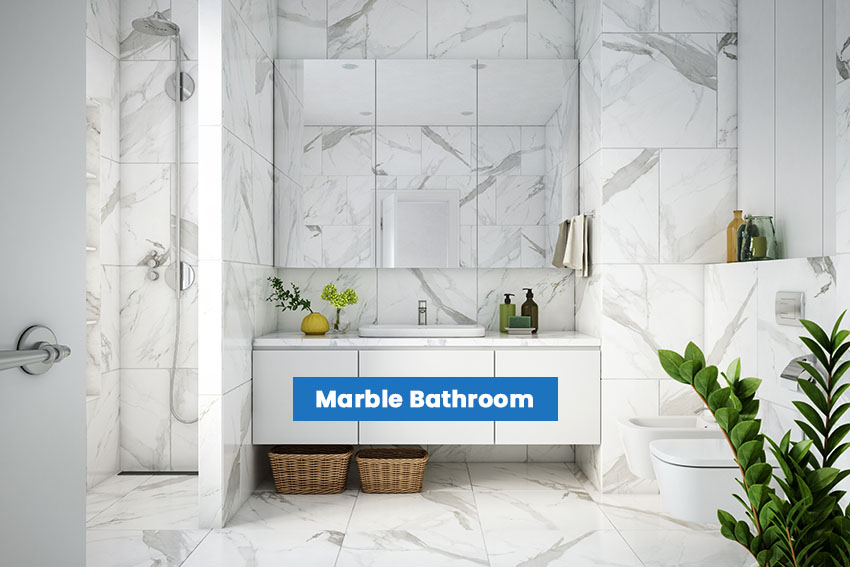
Quartz, on the other hand, is more durable and long-lasting than cultured marble surfaces. They are not quickly scratched, have strong heat tolerance, and do not react quickly with acidic substances.
Cultured Marble vs Quartz Design
When compared to genuine marble, cultured marble has a wider range of colors. Nonetheless, it retains the stronger veins and color uniformity of actual marble slabs.
The seams from the finest cultured marble are never visible, whether used for a little or massive surface area. It replicates the rich, intense tones of natural marble, giving your cultured marble surface an amazing design.
Nevertheless, quartz is indeed the finest choice for precise clarity and more design continuity. Apart from cultured marble, quartz veins are narrower, with a strong accentuation on color uniformity.
The main downside of quartz, on the contrary, will be its visible seams, especially when utilized for smaller surface areas. Despite this, the overall beauty and popularity of quartz for home improvement projects are not affected.
Cultured Marble vs Quartz Cost
The price of cultured marble varies from $30 to $100 per square foot, depending on the manufacturer as well as the extent of your home renovation project. The costs can also vary based on whether you install it in a kitchen or bathroom in addition to the color of the material.
Quartz costs about $50 to $150 per square foot. Since cultured marble is manufactured from a combination of marble and resin, it is less expensive than quartz.
Cultured Marble vs Quartz Cleaning & Maintenance
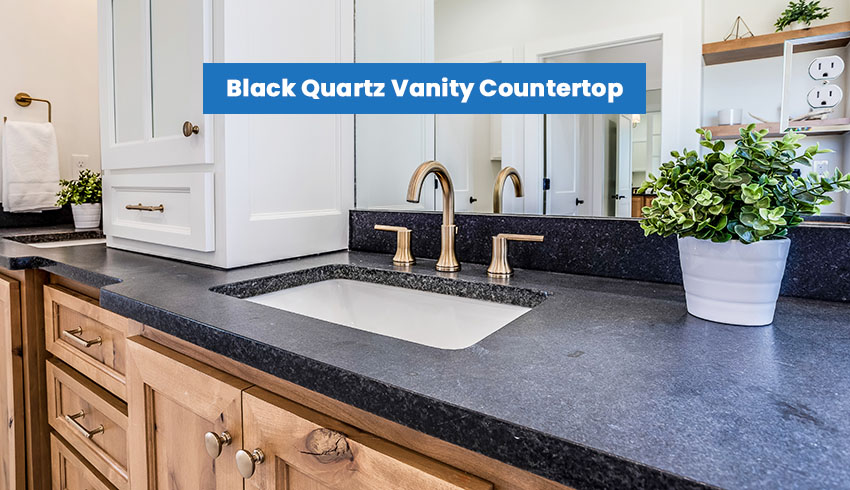
Moreover, cleaning is as simple as using a mild dish washing liquid and a soft microfiber towel. You should remember, though, to avoid using an abrasive cleaner or brush because it may remove the sealant film that covers its pores.
Because this artificial stone is still constructed of marble minerals, splashes and acidic substances should be avoided to happen on its surface. Acidic substances and spills might react with the chemical element present in marble, which might induce etching.
In comparison to cultured marble, quartz is more impervious to scratches and fractures. Nevertheless, if you want to preserve the exceptional attractiveness of this stone, you should never rely on its inherent endurance.
To clean the surface of cultured marble, you can use a neutral pH soap mixture as well as a non-abrasive cleaner. Quartz, not like cultured marble, does not necessitate periodic sealing treatment due to its non-porous composition.
Furthermore, notwithstanding its excellent heat resistance, quartz reacts to extremely high temperatures by forming a dark stain on its surface. Hence, for example, if you have a quartz countertop, you still have to use hot pads when placing hot items.
Similarly, when subjected to UV lights over extended periods, this synthetic stone tends to react. The major reason why quartz is not recommended to be placed outdoors is that the color might fade when constantly exposed to sunlight.
Where To Use Cultured Marble And Quartz
Cultured marble is suitable for practically any application. However, there are some areas of the home that benefit from cultured marble.
Here are the parts of the house where you can best use cultured marble:
• Bathing Areas (Shower Room, Bathtubs, Freestanding Bathtubs, Jacuzzi, Shower and Tub Combination)
• Bathroom Vanity
• Kitchen Countertop
• Flooring
• Pedestal Sink
• Kitchen Backsplashes
Quartz is a gorgeous material that works well as a point of focus in the kitchen or bathroom. A stone slab also provides consistency and flow to your area, making small spaces appear larger.
Quartz can be used in the following areas of the home:
• Feature Walls
• Bathing Areas (Shower Room, Bathtubs, Freestanding Bathtubs, Jacuzzi, Shower and Tub Combination)
• Laundry Room Bench Surface
• Furniture (Desk, Coffee Table, Side Table, Entertainment Stand)
• Cutting Boards
• Serving Trays
• Flooring
• Kitchen Backsplashes
Visit our guide to marble vs granite countertops for more related content.




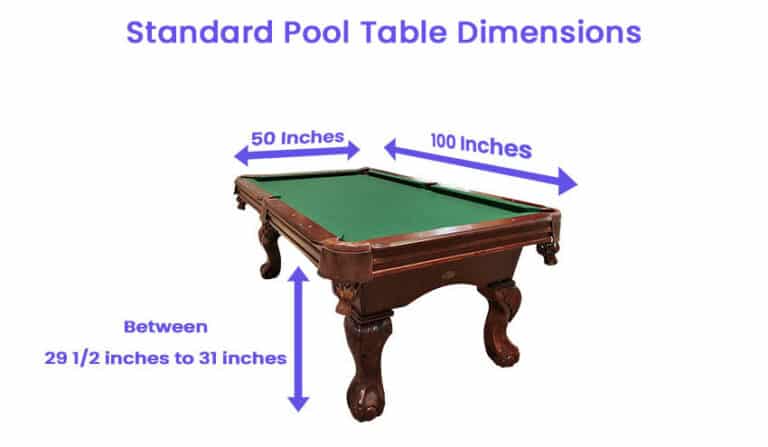

Quartz surfaces require a diamond wheel to remove scratches. Does cultured marble also require one?
What does hair tint do to semi-porous surfaces cultured marble surfaces?
For minor scratches and burns on cultured marble, a 600 to 800 fine-grit sandpaper or a buffing machine with compound can work well.
If its a deeper gouge or scratch it will need refinishing with a gel coat resin. Unfortunately, these larger repairs are usually noticeable and require refinishing the entire surface to avoid areas of discoloration.
When it comes to hair dye, it can stain the surface, especially with darker tints. Thanks for the questions.